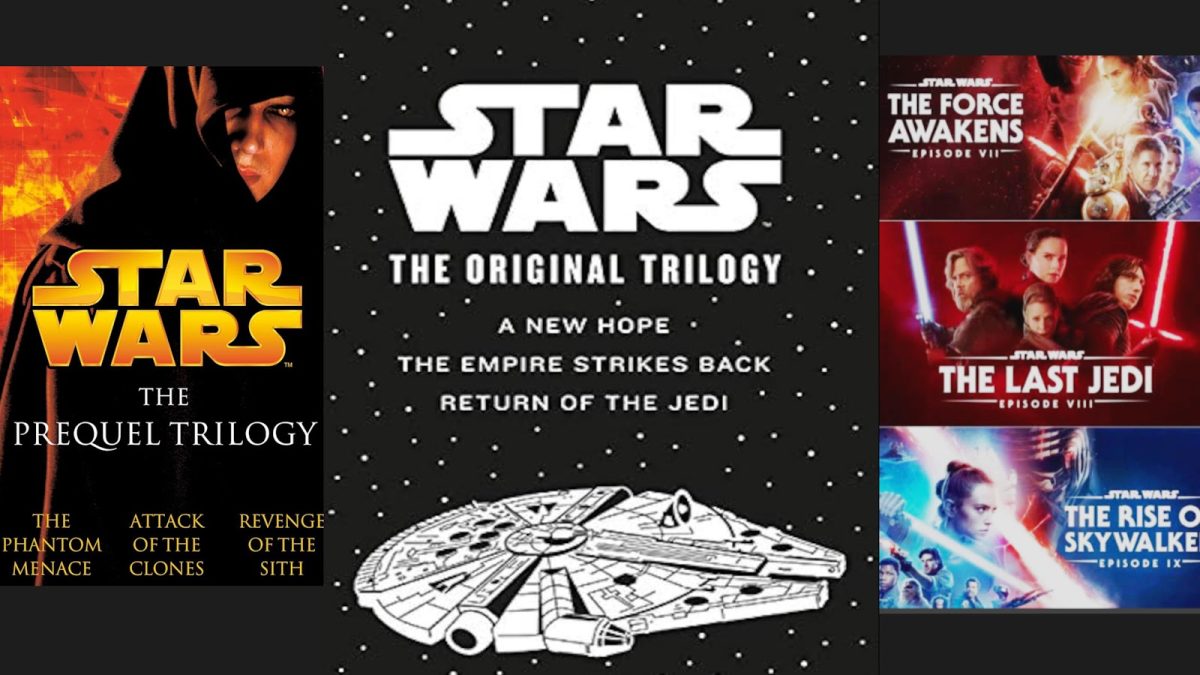
sophiachaves5851397
The three trilogies remain intact, but new additions have diluted the greatness. Photo collage courtesy of sophomore Sophia Chaves.
On May 25, 1977, the movie “Star Wars” (later re-titled “Star Wars: Episode Ⅳ — A New Hope”) changed the genre of science fiction forever.
Knowledge of this franchise is unavoidable, and many San Luis Obispo High School students have heard of “Star Wars”. What began as a world with unimaginable potential, wonder, and mystery has slowly morphed into a fractured franchise, struggling to balance corporate interests with fan expectations.
The galaxy that once felt so close slipped away from our grasp—and for many fans, it feels like “Star Wars” has died.
Although, the “Star Wars” brand is more alive than ever—new shows, games, merchandise, and announcements flood timelines every few months. But something deeper has faded: the heart. The soul. The myth that once breathed life into the saga now feels muffled under corporate weight and rushed storytelling.
“I like the original trilogy better. Those movies are just so iconic, and the plots weren’t like anything before them. As well as the practical effects and costume design, they are incredible,” said sophomore Samantha Pearson.
The original trilogy still stands as a monument to mythic storytelling. It connected deeply because it was both fantastical and human. It reminded us that even in the darkest times, the light can find a way.
“The prequels are kind of the first act of the Skywalker Saga. The prequel trilogy really just sets the tone for the rise of Darth Vader and the downfall of the galactic republic. It’s great and has such a big impact on the story and how you view each character,” said sophomore Ciera Bloom.
The prequels came with controversy, yes, but also with passion. Say what you will about their execution—George Lucas still had a singular vision. He dared to be different. Over time, even the harshest critics came to appreciate what the prequels added to the larger narrative: political depth, tragic arcs, and a deeper look at the fall of Anikan Skywalker, a decorated war hero.
“When the first sequel came out, episode 7, I was excited. I mean, new characters, and a stormtrooper who converted to the Jedi order. I even liked episode 8, because there was a moment where I thought they were going to have Rey leave the jedi, and Kylo leave the sith, and they were going to form something new, like a morally grey jedi order. And so I thought it was great,” said CTE instructional leader Zach Roper.
When Disney acquired Lucasfilm in 2012, things changed. “Episode Ⅶ —The Force Awakens” brought hope back for a moment. Nostalgia ran high, and it was refreshing to see lightsabers and starships on the big screen again. The next two installments in this trilogy received major backlash and outrage among fans. Many believe Luke’s character was butchered, the major fumble of Finn’s character was a clear miss by the new writers, and the way Palpatine returns is laughable.
“From what I’ve read about it, there was no overarching person in charge of where the story was going in the sequels, they were kind of making it up as they went along, so each movie was just very different from the last. It’s just a disappointment,” continues Roper.
Today, we are drowning in “Star Wars” content. TV series, animated shows, tie-in novels, games—there’s something for everyone, yet it rarely feels like it’s for us. The emotional resonance, the gravity of the storytelling, the magic—that rare, untouchable force—is missing. In its place is spectacle. More lightsabers. More cameos. More timelines. And yet, less meaning. The more Disney pushes out content, the more fragmented the galaxy feels. Instead of a saga, “Star Wars” has become a series of disconnected moments. It’s hard to care deeply when nothing seems to carry lasting weight.
To say “Star Wars” is dead is not to say we hate it—it’s to say we miss it. We mourn what it once was. We long for what it could be.